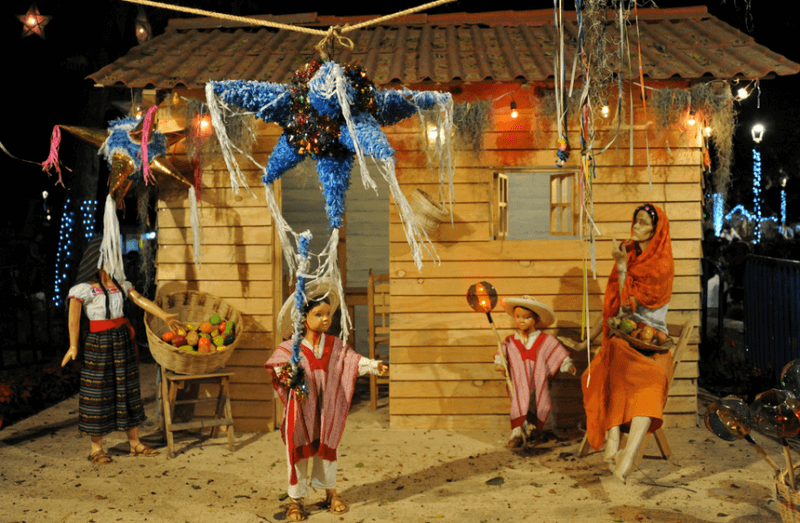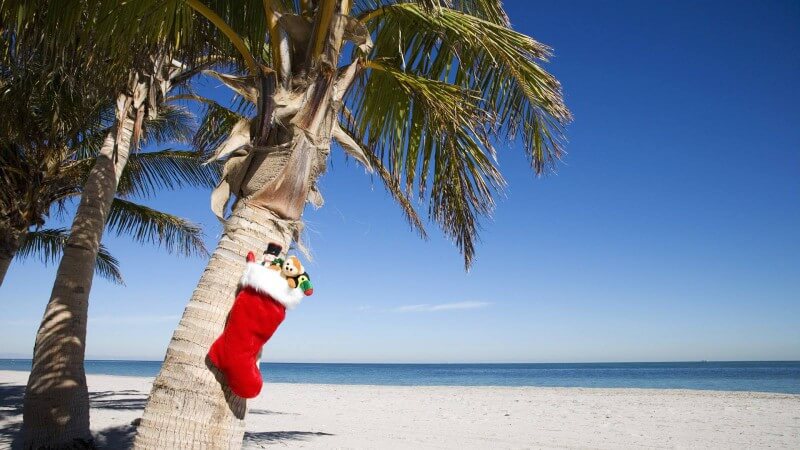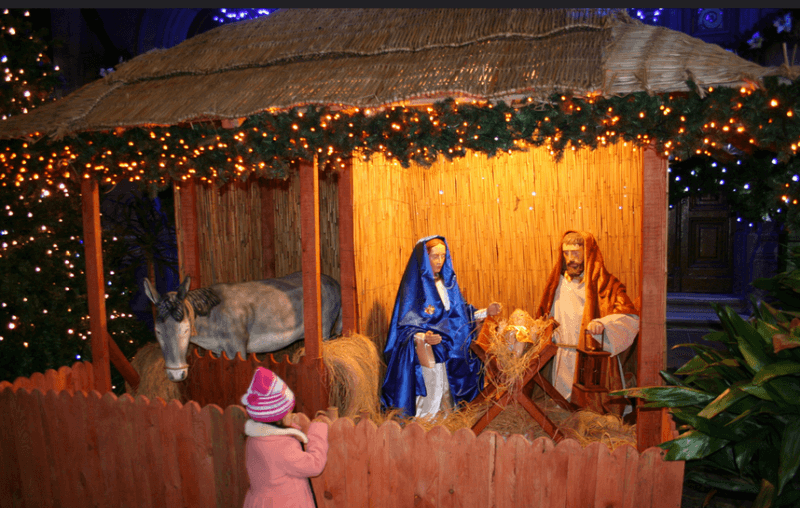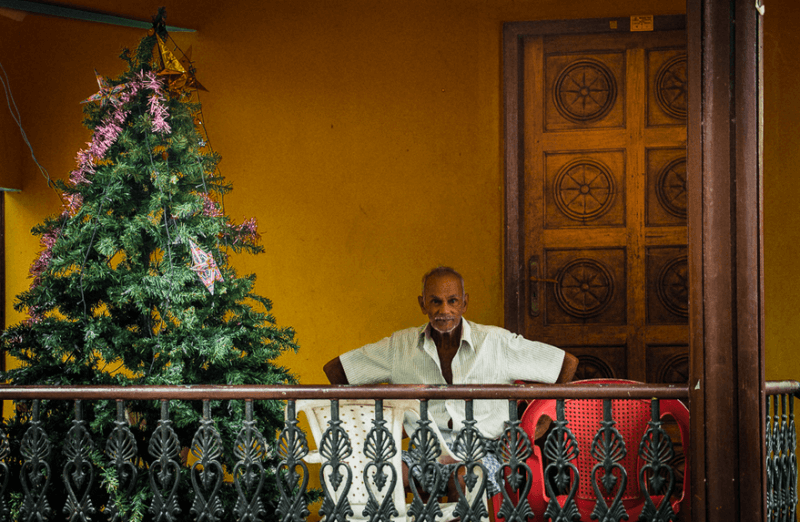Christmas in Mexico
Rating: 9,2/10 (2494 votes)  Mexicans are a hot Latin American people, they celebrate holidays on a special scale. Christmas is no exception, it is already celebrated in this country on December 12th. This day is called the Feast of the Intercession of the Most Holy Theotokos, the patroness of this southern country. Mexicans are a hot Latin American people, they celebrate holidays on a special scale. Christmas is no exception, it is already celebrated in this country on December 12th. This day is called the Feast of the Intercession of the Most Holy Theotokos, the patroness of this southern country.For the most part, Christmas traditions in Mexico duplicate Spain, but only with their own national flavor. Many cultural differences between the former colonial people and the metropolis are that the people of Mexico mixed the classical traditions of Europe with the folk beliefs of the Mayans, Aztecs and other indigenous peoples. They celebrate Christmas in Mexico in a special way. And it's not only how long the holiday holidays last, but also how the people living in this Latin American country feel about the religious celebration.  Christmas in Mexico Christmas traditions in Mexico12 DecemberThe start of Christmas in Mexico coincides with the Veil, or as it is commonly called here – Happy Mary of Guadeloupe. The tradition of celebrating this day on December 12 dates back to the colonial period, namely – by the 16th century, when the territory of Mexico was just beginning to be settled by immigrants from Spain.According to legend, a young Mexican with Indian by the roots of Juan Diego, he saw in a dream the Virgin Mary, who appeared to him with a request to pick flowers on Mount Tepeyac, near Mexico City. The young man obeyed his vision, climbed the mountain, and saw a whole clearing of flowers making their way through the snow. With that pores the legend was overgrown with details, but a constant tradition in Mexico has become the appearance of winter greenhouses, where flowers are specially grown for the December 12 holiday. On this day, a noisy fiesta with festive concerts, parades and the constant decoration of streets and facades of houses is announced in all towns and villages – fresh flowers, in memory of the Mother of God. Mexico City becomes the main city of the holiday – in its northern district since the 18th century there is one of the key shrines of Catholics – Church of the Virgin Mary of Guadeloupe. Every year hundreds of thousands of pilgrims from all over the world come to the temple for solemn services.  Church of Our Lady of Guadeloupe Important: The immense popularity of the temple and the miraculous icon that has survived since the 16th century gave rise to many stories about the miraculousness of this place. to the Basilica of the Virgin of Guadeloupe, on their knees. Many believers end the difficult path with bloody limbs, but this does not stop anyone. After the solemn services on December 12, Mexico declares a decade of preparations for Christmas festivities, although there are separate holidays during these days. December 16Every year, December 16, traditional musical and theatrical processions with the participation of" Mary"and" Joseph"take place on the streets of all cities in Mexico, who wander from house to house in search of lodging. Everyone is involved in the celebration, the crowd is growing and moving towards the local church, where the festive mass is held.In Mexico, this day is called Posada – this is a kind of Latin American answer to our carols.  Mary and Joseph A couple of Joseph and Mary, played by professional and amateur artists, come to pre-arranged houses or specially designed decorations, where they ask the hosts to stay overnight. To earn the right to be a guest, the actors sing Christmas carols and then go to the `` house '' and bless everyone who comes. Important: Posada can last 9 days, symbolizing 9 months of pregnancy of the Virgin Mary. Processions during these days are held in different places of the city. Very often tourists are attracted to the action, it is good if they are foreigners who are actively add to the national traditions of Mexico. Another Posada tradition is the performances of 'Pastorales'. These are kind of 'come to life' nativity scenes on the theme of the Annunciation, Christmas and other events related to the Gospel. The main characters of the scenes are – shepherds who experience a variety of hardships, but each performance ends with a happy ending – the birth of Christ and the salvation of the souls of the protagonists. December 24On Christmas Eve, December 24, a traditional Christmas table is served, which is dominated by local dishes: tamale, atole, Biscay cod, etc. But the usual European dishes for this holiday cuisine like turkey, ham or pig, in Mexico you can only find in wealthy families. Tamale Tequila, rum, ponche and cider are the most popular drinks. From spices - bucuelos - aniseed cookies served with syrup, and the plates after it beat for luck. Important: The original culinary traditions of Mexico are reflected in the Christmas tables. It is not customary to get carried away with alcohol on the sacred night, so they drink carbonated cider. This reduces the amount of alcohol you drink, but does not affect the holiday fun in any way. On the table you can also see the abundance of various fruits: apples, guavas, nuts, prunes. They also serve sugarcane and cinnamon juice. Chocolate is of particular importance to Mexicans during Christmas. There are Christmas trees in Mexico, they are traditionally decorated with balls and garlands, although not every family can afford a living tree, often Mexicans get by with an artificial substitute, which they call arbolito. True, no reindeer team, no Santa Claus, no bag of gifts on Christmas night, no one is waiting here - this symbol of Christmas passed by Mexico. Christmas night in any locality in Mexico – this is the time of long masses, to which a huge number of believers come. As a rule, there are no free benches in temples, many take up space in the aisles just to be inside the temple. December 25But December 25, on the first Christmas day, the streets of Mexican cities are noticeably empty. And the point is not at all that the locals celebrated the main holiday of the year all night. According to a centuries-old tradition, this day should be spent with family or closest friends.Only in the late afternoon Mexicans start to leave warm houses, to see the festive fireworks and parades, which are a continuation of the long festival processions. Traditionally grandiose pyrotechnic and light shows are held in the center of Mexico City.  Fireworks for Christmas We also recommend reading What the UK flag means Topic: Christmas in Mexico. |




